 My summer road trip began in Mesa, AZ and went as far east as Niagara Falls, Ontario, CA. I’d heard about the beauty and power of Niagara Falls since I was a kid, but this was my first look. The center of the Niagara River marks the border between the US and Canada. It is overwhelming to see the volume of water cascading over the falls. All my years of living in a desert landscape makes the exposure to swift moving rivers, great lakes, and the accompanying bridging structures quite startling. Everywhere you look there is water moving, alongside the road you are traveling, and then surprise, the location you are seeking is across yet another bridge. It is difficult to imagine living around so much water, there is moisture in the air, plants grow in abundance, and trees are everywhere. The change in landscape was demonstrated so clearly in the two gardens I explored, one on each side of the Falls.
My summer road trip began in Mesa, AZ and went as far east as Niagara Falls, Ontario, CA. I’d heard about the beauty and power of Niagara Falls since I was a kid, but this was my first look. The center of the Niagara River marks the border between the US and Canada. It is overwhelming to see the volume of water cascading over the falls. All my years of living in a desert landscape makes the exposure to swift moving rivers, great lakes, and the accompanying bridging structures quite startling. Everywhere you look there is water moving, alongside the road you are traveling, and then surprise, the location you are seeking is across yet another bridge. It is difficult to imagine living around so much water, there is moisture in the air, plants grow in abundance, and trees are everywhere. The change in landscape was demonstrated so clearly in the two gardens I explored, one on each side of the Falls.
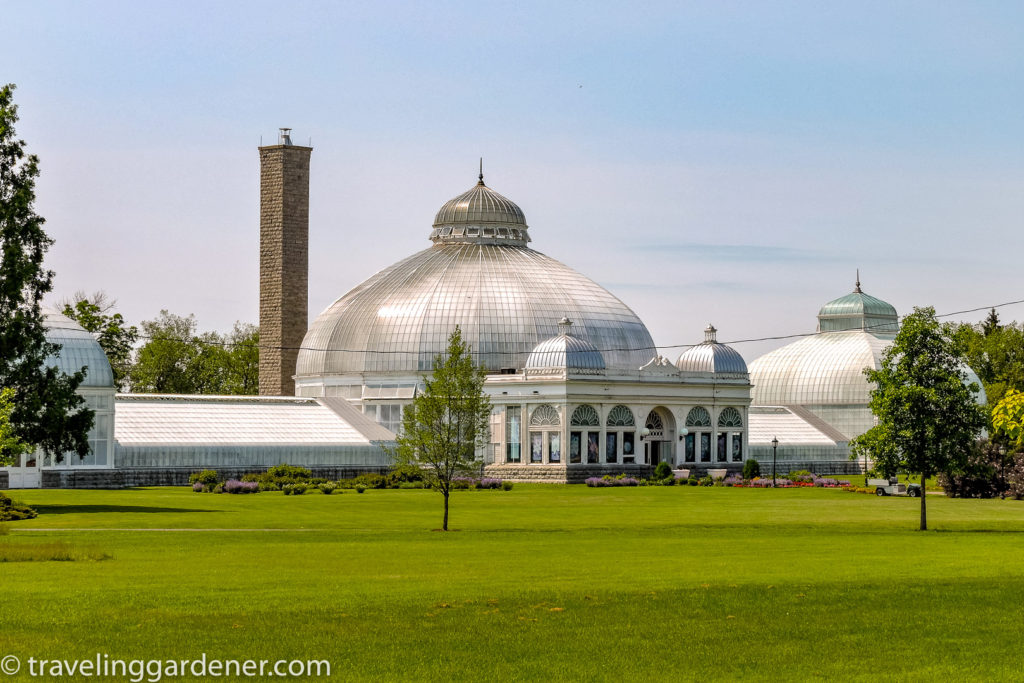
The Buffalo-Erie County Botanical Garden, NY, is home to the South Park Conservatory, a white castle of glass surrounded by a moat of green lawn during the summer. Built in 1894 by the American team of glasshouse architects Lord & Burnham, it was modeled after the Crystal Palace in England. It protects a collection of exotic plants, first gathered in the early 1900’s, from the frigid winter weather of this region.
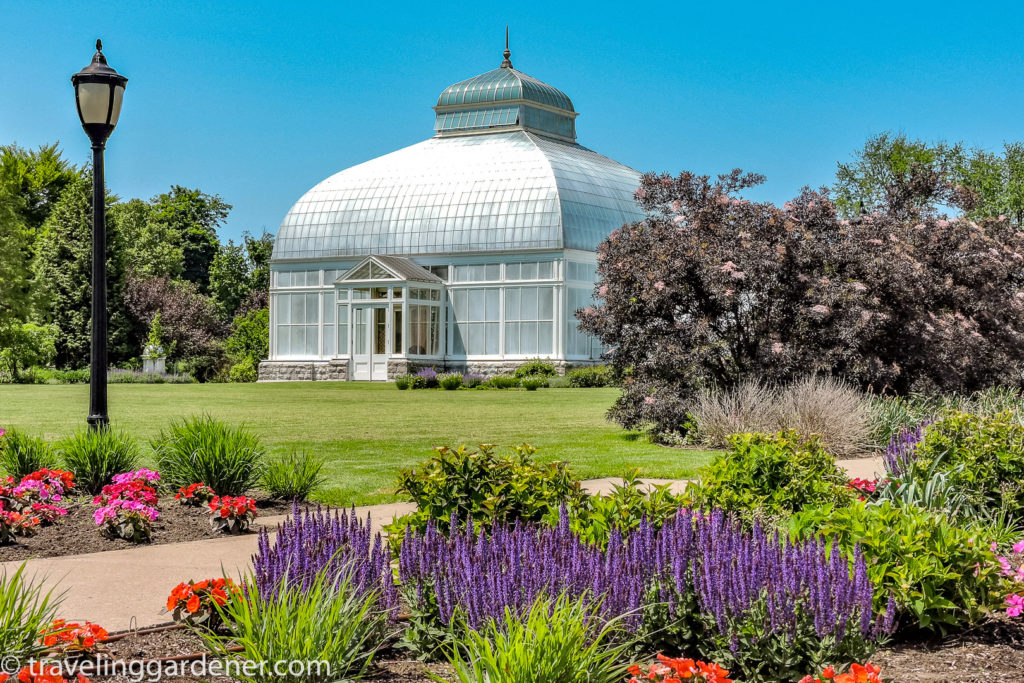
This Victorian style conservatory was a point of pride for the parks of Buffalo when it opened. Fredrick L. Olmstead designed the park system and the conservatory was the crown jewel. Victorians believed in the physical benefits of walking through the conservatory to connect to the beauty of nature. The conservatory holds the perfection of nature under ideal growing conditions. This enormous glass house is divided into 12 collection houses showcasing plants from around the world.
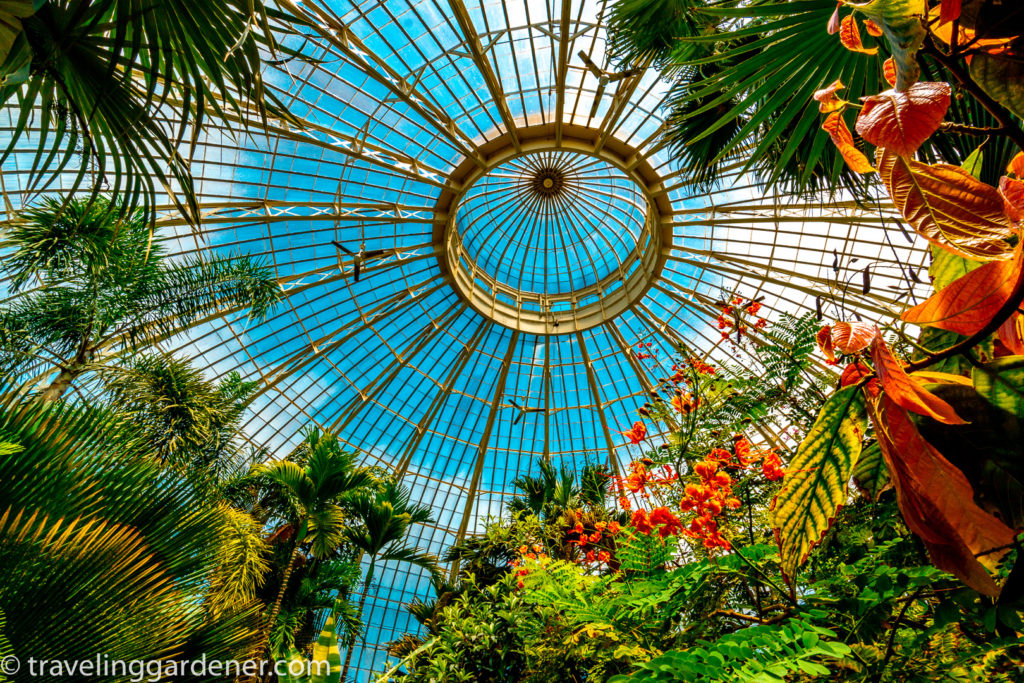
Just imagine a freezing winter day in Buffalo, NY and you walk into a desert landscape, then you arrive in the tropics, wander into a rainforest, a cloud forest, and explore the everglades.
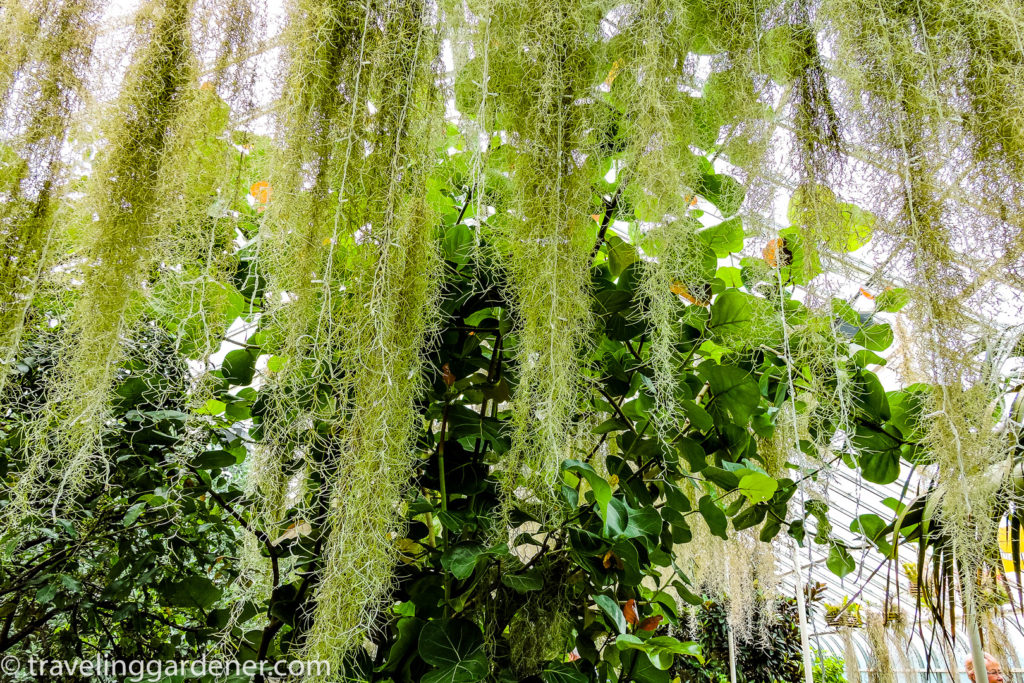
Not only can you change climates, but you see the beauty of our natural world while a blizzard of snow swirls outside. This crown jewel of a conservatory dissolves the borders between gardeners.
The palm house dome contains a collection of rare palms and tropical trees from Cuba, Australia, and a chocolate tree from South America. The desert room introduces cactus, agaves, and succulents from the African and American deserts to local visitors as strange to them as all the water in this region is to me.
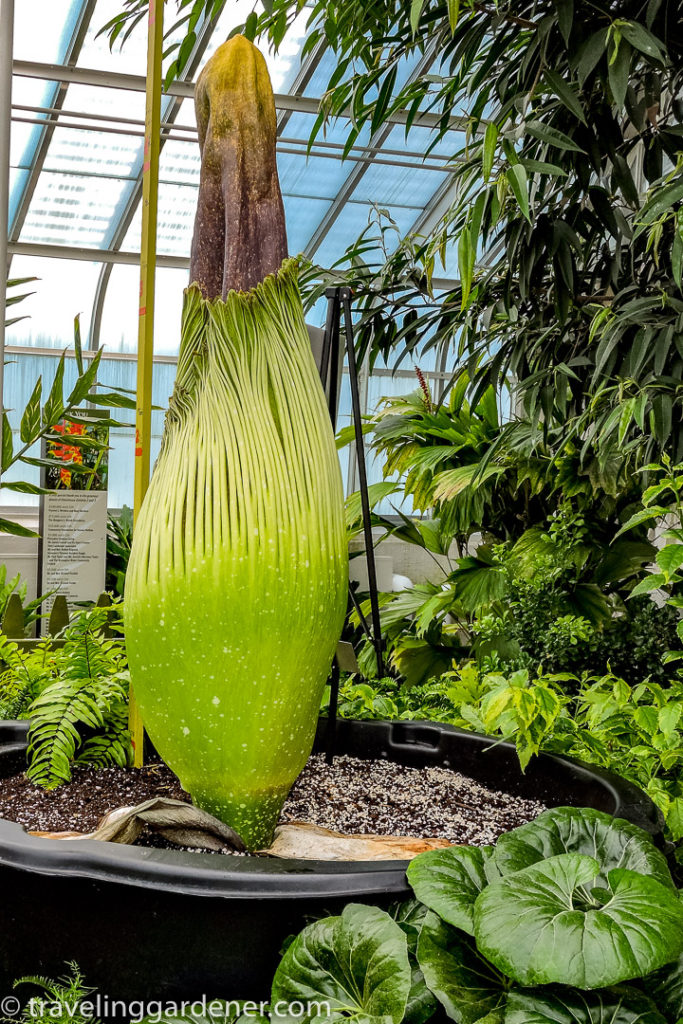
The star of the tropical collection at the moment of my visit was Morty, a six-foot Corpse Flower, just beginning to bloom.
The following plants caught my attention.
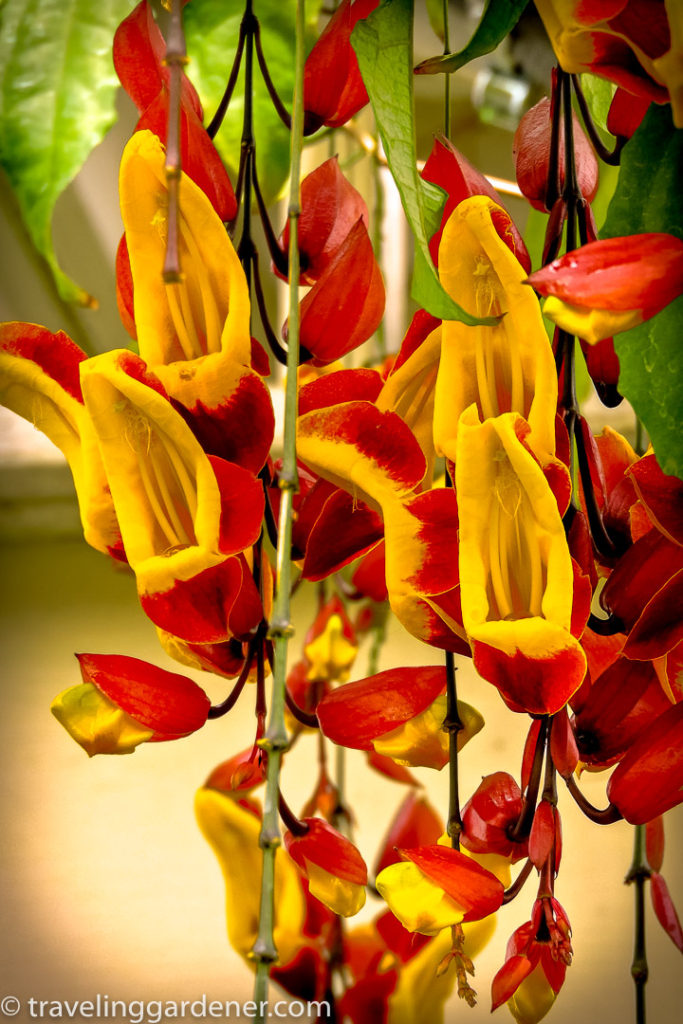
Clock Vine from southern India
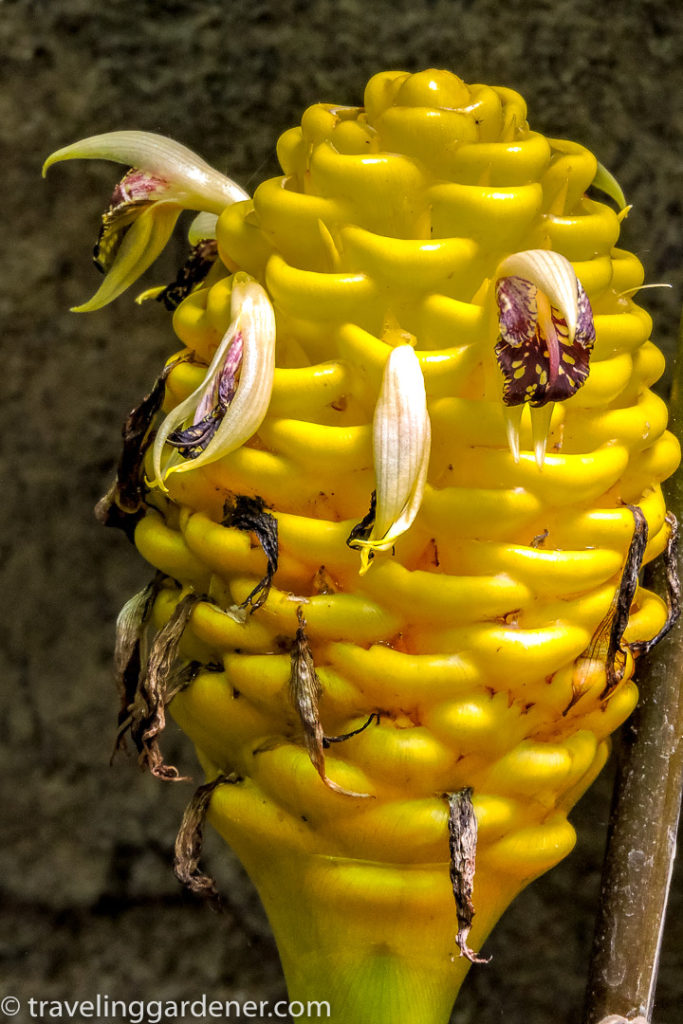
Beehive Ginger from Indonesia,
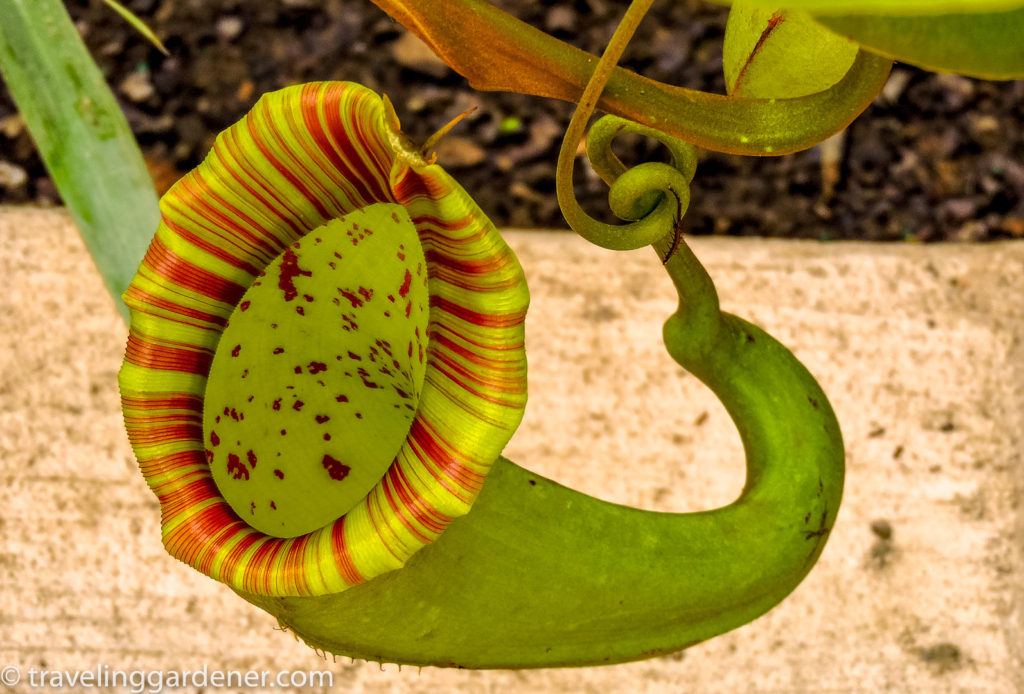
Pitcher plant ringed w/ color,
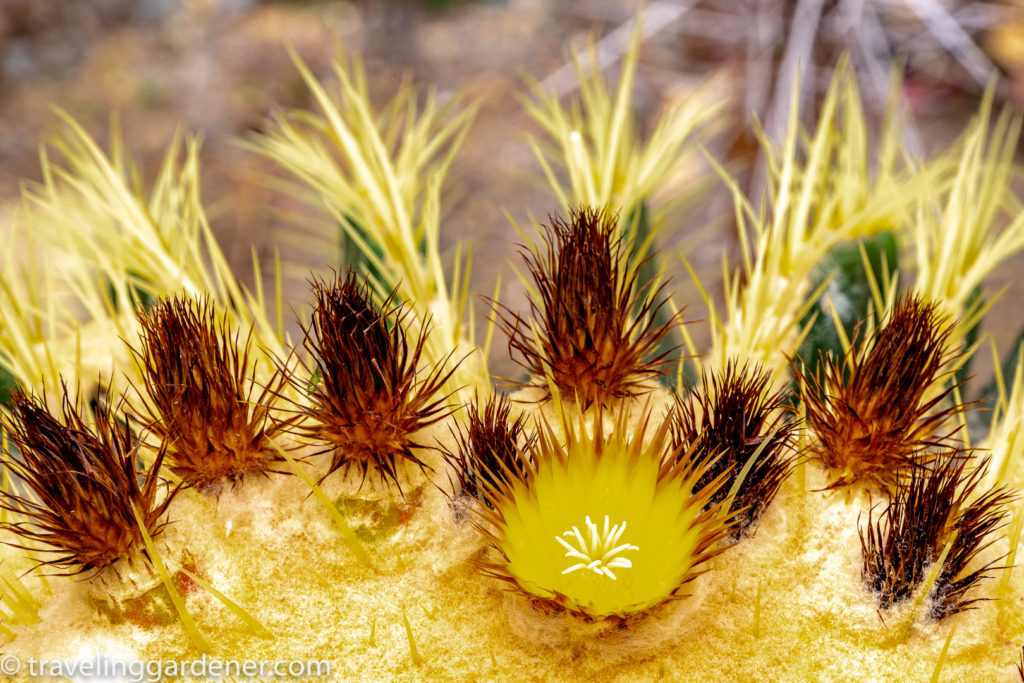
Golden Barrel cactus flowers,
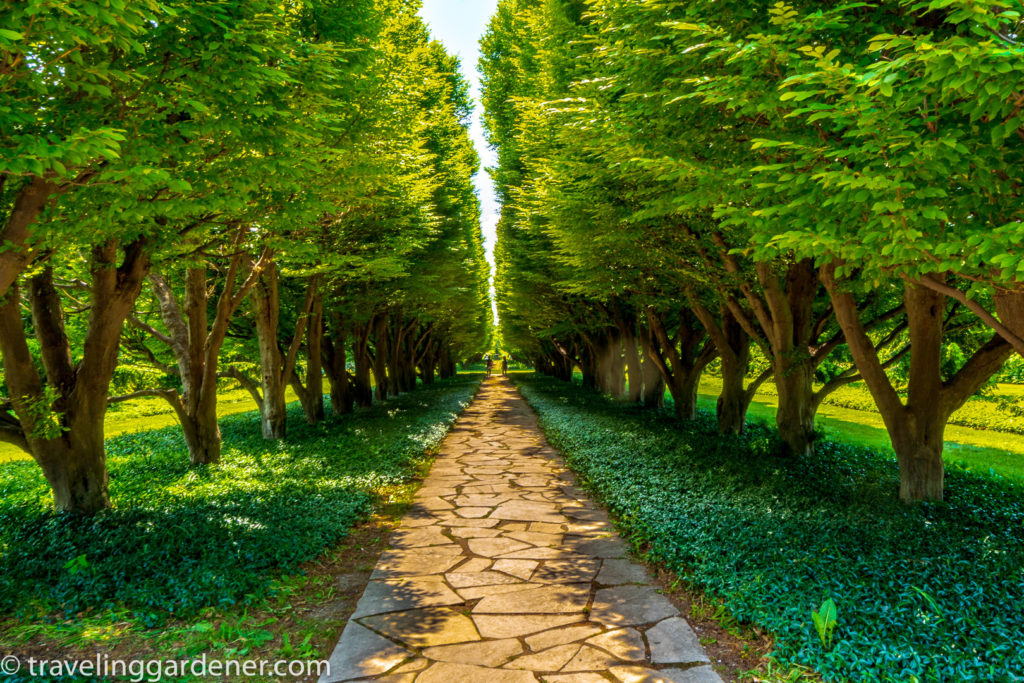
Crossing the border into Canada I visited Niagara Botanical Garden in Ontario. The garden was lush with fresh spring green. The plant palate remarkably similar to the US side with elms, walnuts, and maple trees growing tall and round.
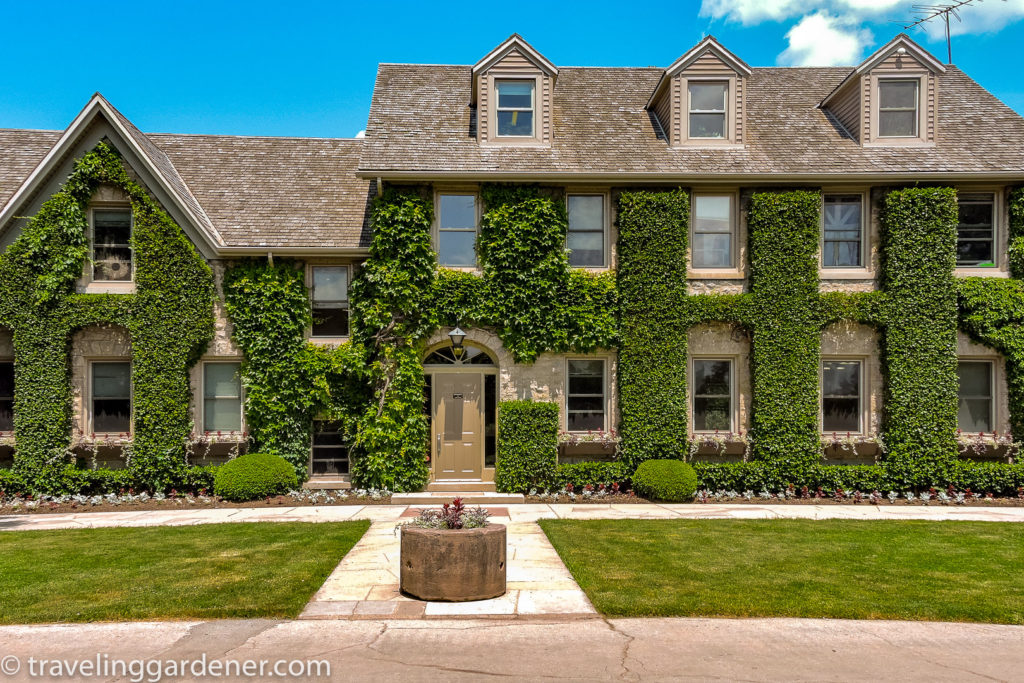
The garden is home to the “Niagara Parks School of Horticulture, an institution that provides unique practical training to horticulture students on the grounds of the Botanical Gardens.” (website) The 99 acres of gardens offers a long walk among a variety of plantings. Here the garden is outside with enormous trees. The iconic Maple trees were fully leafed out in multiple shades of green creating avenues of shade. Sugar, Silver, and Red maples are just a few of the familiar varieties I walked among. Then I discovered a Harlequin Maple (Acer platanoides) with a chartreuse leaf making a real show of color in the stand of trees.
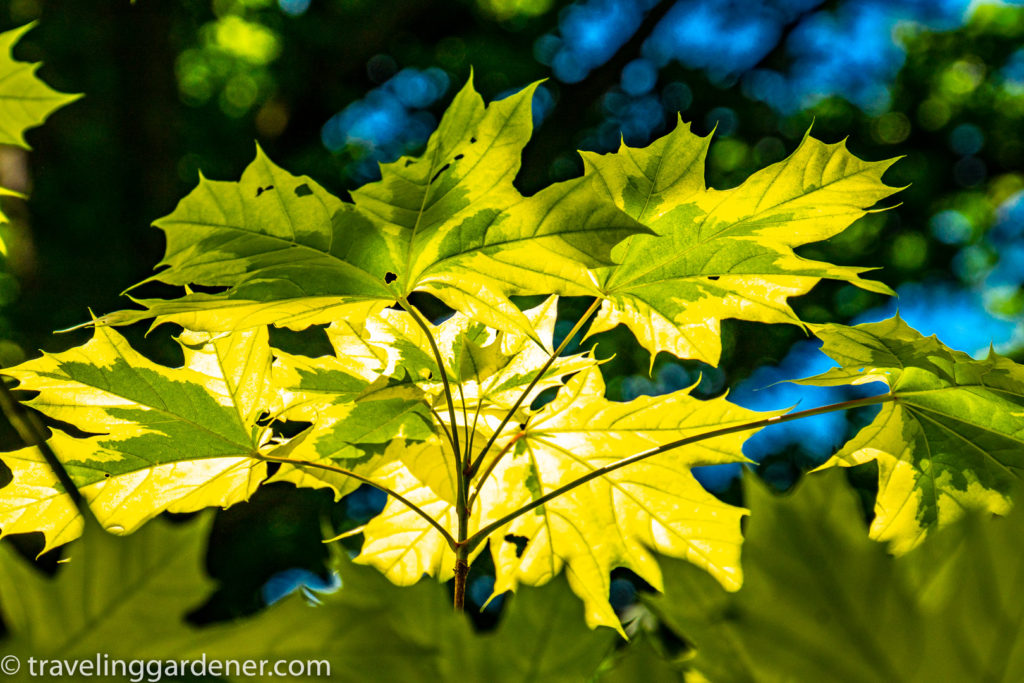
The influence of English garden heritage appeared in formal gardens with yew hedges creating individual rooms planted with colorful annuals around each corner. A very large rose garden would be blooming in a few weeks, a rock garden landscaped with sedums and conifers and spring perennials are only some of the beautiful elements to be found. The conservatory here is a year-round butterfly haven.
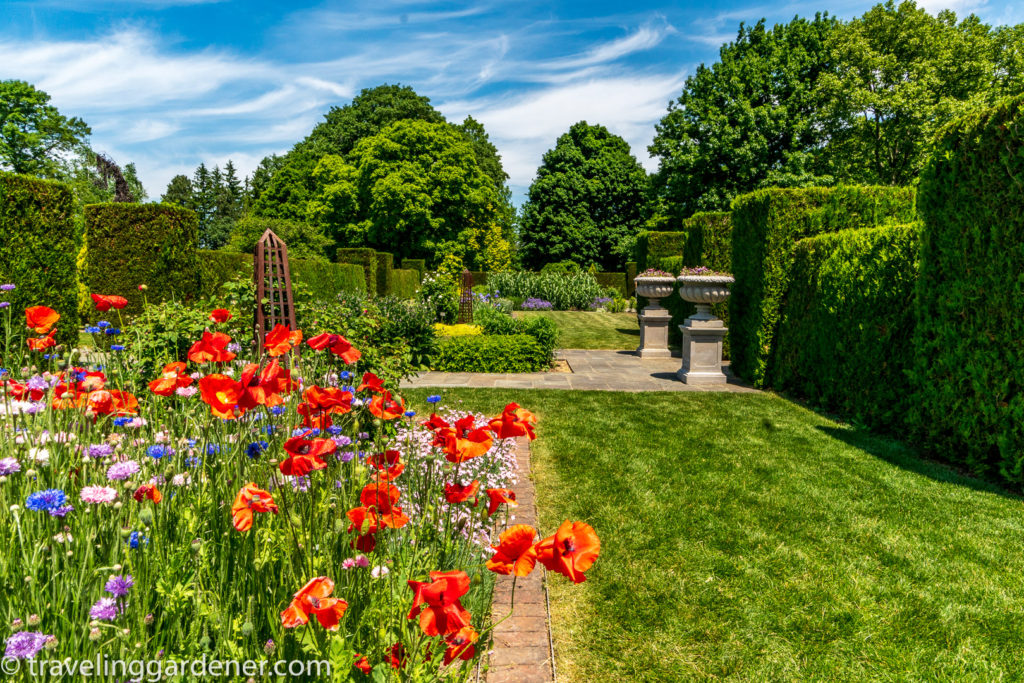
I realized things grow very well here but when a garden intern explained the prairie garden before us had been growing only six weeks since it had been burned off from the winter debris, I was shocked at how much it was recovered. The prairie garden is designed by school alumni to illustrate responsible and sustainable species beneficial to pollinators and native butterflies.
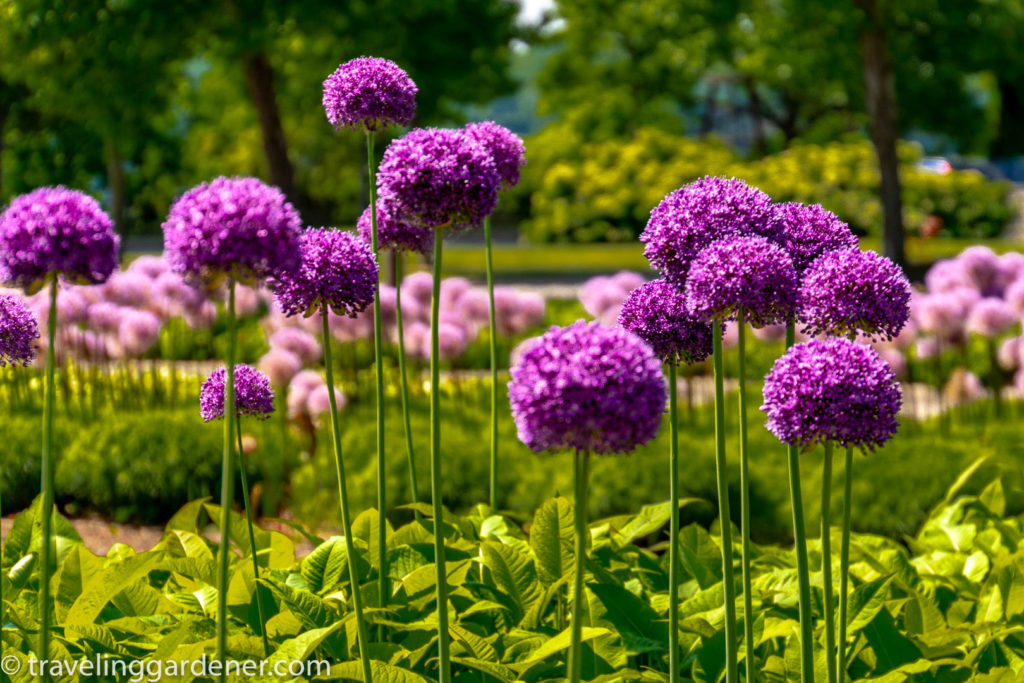
I spent several wonderful hours exploring this glorious green place. Reluctantly leaving there were still flowers blooming every step of the way back to the parking lot with a mass planting of purple Alliums, golden yarrow, and a lavender lily. Oh Canada! what a beautiful place.
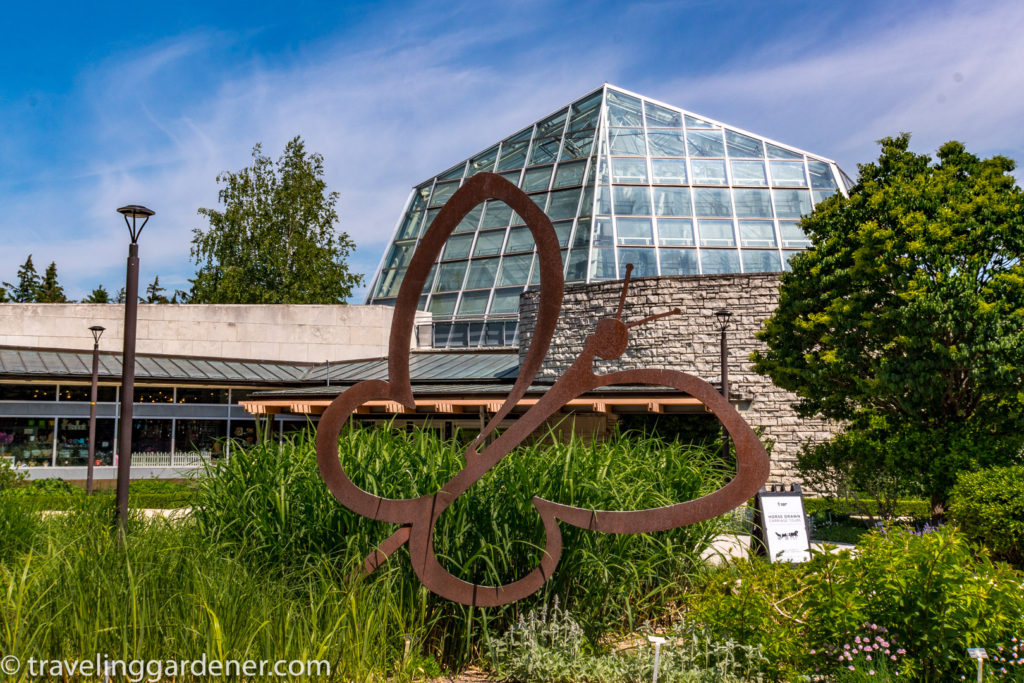
Both of these gardens were busy with visitors, many visiting from afar, but many locals were enjoying the fine weather and the beauty around them. In the Buffalo conservatory groups of school children were enthusiastically following the docents introducing them to the plants from around the world.
Gardens are the place everyone can see the variety, value, and beauty of the natural world. Gardeners know no boundaries in sharing the beauty of nature.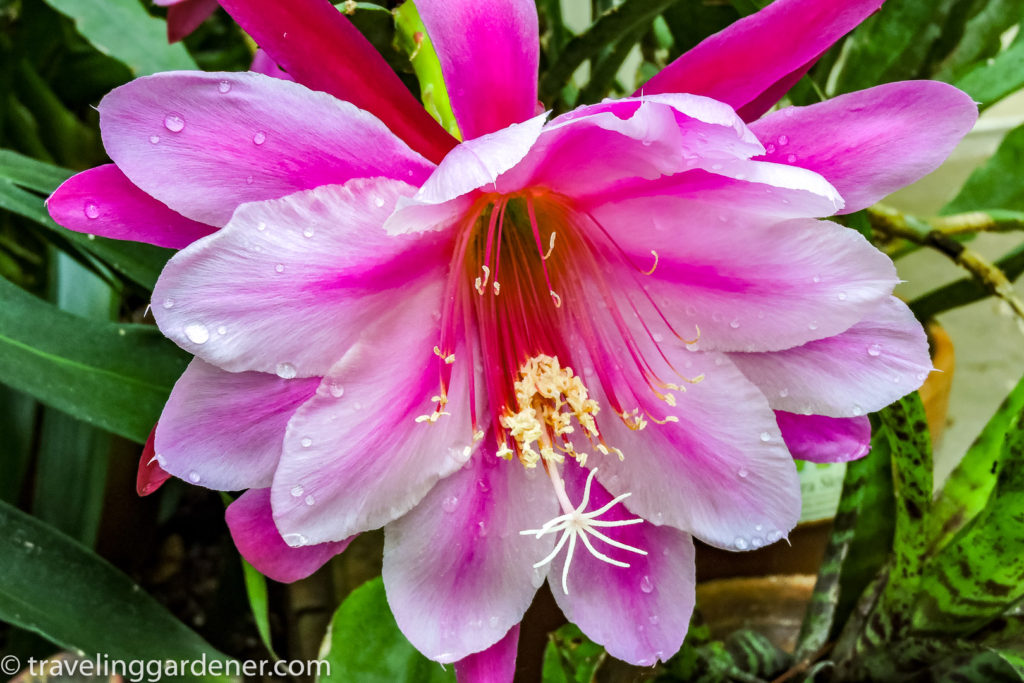
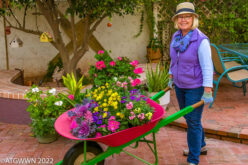
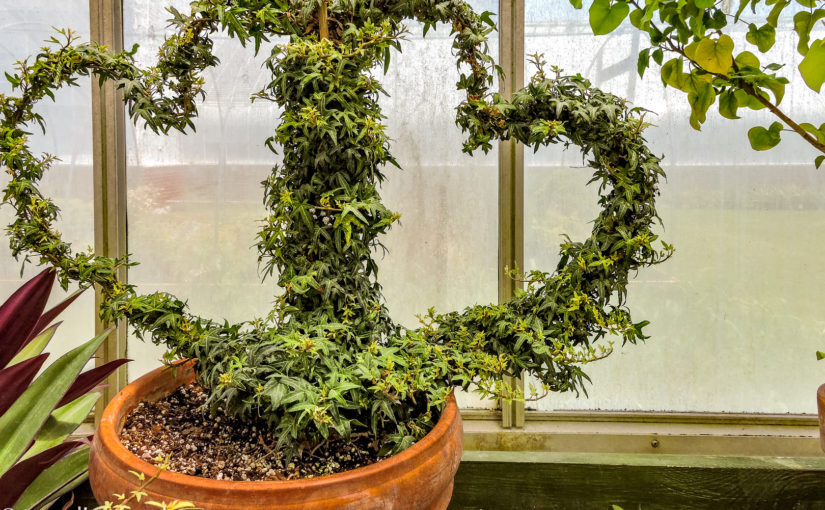
Magnificent! Having been in that lush and beautiful area myself, I truly appreciate your descriptions and photos. Thank you for this special treat.
The pictures are beautiful. I love the conservatorys that allows people to go into different kinds of moods and climates. There are so different looking plants.
I so appreciate you sharing your garden travels. You make my day!
Hope to get up that way again someday. I have seen the falls but was unaware of the gardens.
Robyn
Lovely photographs!
Like Robyn I’ve seen the Falls but not the gardens. You always take me into places that are beyond my travels. Thank you again!